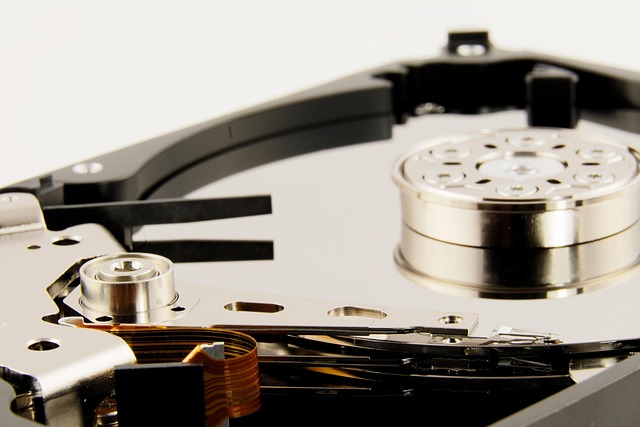
Decoding Energy Independence: The Case for Battery Storage at Home
In an age where the conversation around renewable energy and sustainability is becoming increasingly prominent, the concept of energy independence is rising to the forefront of technological innovation. One of the most compelling ways to achieve this independence is through the adoption of battery storage systems in homes. This article will explore the significance of battery storage, how it helps individuals and communities achieve energy independence, and the various technologies available today that make this a viable option for homeowners and businesses alike.
The Shift Towards Renewable Energy
As the dire impacts of climate change grow more apparent, many nations are making strides to transition away from fossil fuels. The shift towards renewable energy sources such as wind, solar, and hydroelectric power is a major step in reducing carbon emissions and preserving our planet’s health. However, one of the challenges of these renewable sources is their intermittent nature; they are not always available on demand.
For instance, solar energy generation peaks during the day, while energy consumption often spikes in the evenings when the sun has set. Thus, a means to store excess energy produced during peak generation times is necessary to align energy availability with demand.
What is Battery Storage?
Battery storage systems serve as reservoirs for electricity produced by renewable sources. They capture excess energy generated during high-output periods and release it when generation is low or demand is high. This not only facilitates a reliable energy supply but also enhances the overall efficiency of renewable energy systems. There are various types of battery technologies available, each offering distinct advantages.
Types of Battery Storage Technologies
Several technologies are currently prevalent in the battery storage market. Understanding these can help homeowners make informed decisions about which systems would best fit their energy needs.
Lithium-Ion Batteries: By far the most common form of battery storage today, lithium-ion batteries boast a high energy density and efficient energy conversion rates. They are used in many applications, from portable electronics to electric vehicles and home energy systems.
Lead-Acid Batteries: A more traditional option, lead-acid batteries have been used for decades and are more affordable upfront. However, they have a shorter lifespan and lower energy density compared to lithium-ion batteries.
Flow Batteries: A newer technology on the market, flow batteries use liquid electrolyte solutions to store energy. They can offer longer-term storage solutions, making them suitable for larger energy systems and commercial applications.
Benefits of Home Battery Storage
Integrating battery storage into home energy systems presents numerous advantages. Achieving energy independence, a common goal for many homeowners, is primarily driven by several pivotal benefits.
Enhanced Energy Autonomy: Home battery systems empower households to produce, store, and manage their electricity, significantly reducing reliance on the grid. This autonomy becomes especially crucial during peak demand periods or emergencies, ensuring a steady power supply even in the face of outages.
Cost Savings: Although the initial investment in battery storage can be considerable, over time, homeowners can save significantly on electricity bills. By storing energy when rates are lower and using it when rates are higher, families can hedge against fluctuating energy costs. Some regions also offer incentives and rebates, further lowering installation costs.
Environmental Impact: Home battery systems support the adoption of renewable energy by facilitating the use of solar or wind energy. By maximizing the use of clean energy sources, homeowners contribute to reducing greenhouse gas emissions and promoting sustainability.
Grid Support: As more homes adopt battery storage, the cumulative effect can relieve stress on the grid. In times of heavy demand, stored energy can be released back into the grid, supplying much-needed power and improving overall system stability.
Considering Installation: What to Know
For homeowners considering the integration of battery storage, there are several factors to contemplate. Understanding local energy requirements, installation processes, and potential financial implications is vital for making a well-informed decision.
Assessing Energy Needs: Each home has unique energy consumption patterns. Evaluating how much energy is used daily can help determine the appropriate battery size and type. Home energy audits can aid in this analysis, providing insights into where energy is used most commonly.
Local Regulations and Incentives: Energy storage regulations and policies can vary significantly by location. Understanding local laws and available incentives can facilitate a smoother installation process and enhance the financial return on investment.
Installation Process: Engaging a qualified professional is crucial for battery installation. This must comply with both electrical standards and safety requirements. Homeowners should research and enlist the services of experienced installers who specialize in battery systems.
Challenges of Home Battery Storage
While the benefits of battery storage are evident, there are challenges that homeowners may face. Recognizing these issues allows for better preparedness and strategic planning when integrating battery storage into home energy systems.
Initial Costs: The upfront investment in battery storage can be prohibitive for many individuals. Despite the long-term savings, the initial outlay may deter some from making the switch to battery storage systems.
Battery Lifespan and Replacement: Each battery type has a limited lifespan, impacting the overall value proposition. Homeowners must consider the eventual replacement costs and the potential need for maintenance throughout the battery’s operational lifetime.
Technological Evolution: As technology progresses, battery systems will continue to evolve. This may create concerns among consumers about investing in current technologies that could become obsolete in the near future. However, choosing reputable brands with warranties and strong support networks can alleviate some uncertainty.
The Future of Home Energy Storage
The case for home battery storage is compelling, and as technology continues to develop, the systems are becoming increasingly efficient and cost-effective. The growing demand for clean energy, coupled with advances in battery technology, hints at a promising future for homeowners seeking energy independence.
As more communities adopt renewable energy, a shift toward decentralized energy systems is likely. Homes with energy storage capabilities will play a crucial role in achieving energy resilience, ensuring that individuals are prepared for whatever challenges may arise.
Conclusion
Energy independence is no longer a lofty dream; it is an attainable goal for many homeowners through the effective use of battery storage. As the world shifts its focus towards sustainability, integrating battery systems into residential energy management represents a significant step towards a cleaner, more resilient future. Homeowners can reap the benefits of autonomy, cost savings, and environmental impact, positioning themselves at the forefront of the energy transition. With advancements in technology and increasing accessibility, now is the time to explore the possibilities of battery storage and embark on the journey toward true energy independence.


